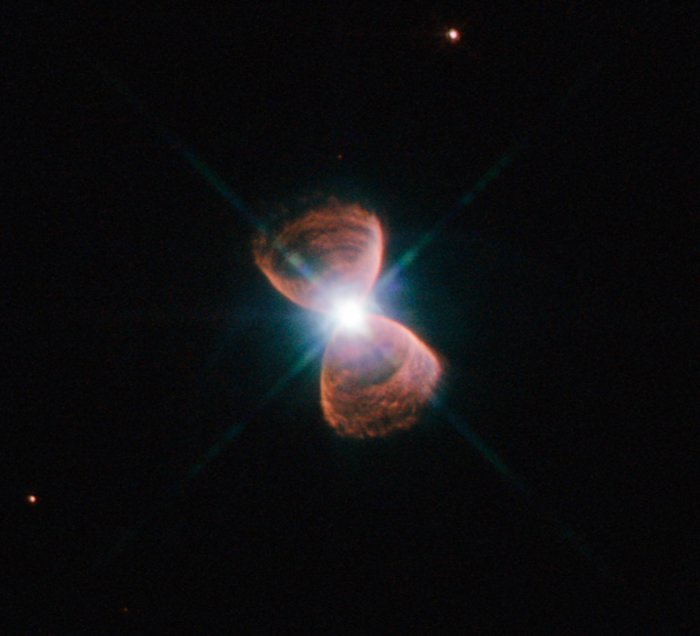Bipolar planetary nebula Hubble 12
This image taken with the NASA/ESA Hubble Space Telescope shows an example of a bipolar planetary nebula. This object, which is known as Hubble 12 and also catalogued as PN G111.8-02.8, lies in the constellation of Cassiopeia. The striking shape of Hubble 12, reminiscent of a butterfly or an hourglass, was formed as a Sun-like star approached the end of its life and puffed its outer layers into the surrounding space. For bipolar nebulae, this material is funnelled towards the poles of the ageing star, creating the distinctive double-lobed structure.
Observations using the NTT and Hubble have found that bipolar planetary nebulae located towards the central bulge of our Milky Way appear to be strangely aligned in the sky — a surprising result given their varied and chaotic formation.
Źródło:O zdjęciu
| Identyfikator: | eso1338c |
| Typ: | Obserwacje |
| Data publikacji: | 4 września 2013 15:00 |
| Powiązane komunikaty: | eso1338 |
| Rozmiar: | 595 x 541 px |
O obiekcie
| Nazwa: | PN G111.8-02.8 |
| Typ: | Local Universe : Nebula : Type : Planetary |
| Constellation: | Cassiopeia |
| Kategoria: | Nebulae |
Współrzędne
| Pozycja (RA): | 23 26 14.68 |
| Pozycja (Dec): | 58° 10' 56.78" |
| Pole widzenia: | 0.49 x 0.45 arcminutes |
| Orientacja: | North is 30.7° lewo of vertical |
Kolory i filtry
| Pasmo | Długość fali | Teleskop |
|---|---|---|
| Optyczny B | 502 nm | Hubble Space Telescope WFPC2 |
| Ultrafioletowy U | 439 nm | Hubble Space Telescope WFPC2 |
| Optyczny R | 656 nm | Hubble Space Telescope WFPC2 |
| Optyczny V | 555 nm | Hubble Space Telescope WFPC2 |
| Podczerwony I | 675 nm | Hubble Space Telescope WFPC2 |
| Optyczny R | 658 nm | Hubble Space Telescope WFPC2 |

